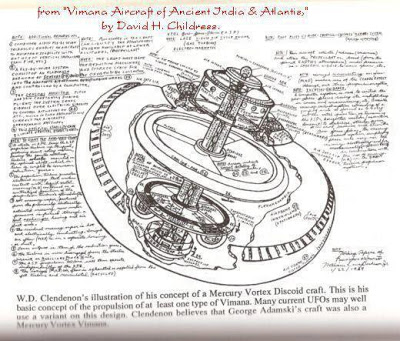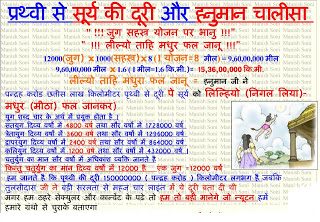मानव निर्मित विमान, जो आधुनिक विमानों की तरह पंखों के सहायता से उडान भरते थे।
महर्षि भारद्वाज के शब्दों में पक्षियों की भान्ती उडने के कारण वायुयान को विमान कहते हैं। वेगसाम्याद विमानोण्डजानामिति ।।
विमानों के प्रकार:- शकत्युदगमविमान अर्थात विद्युत से चलने वाला विमान, धूम्रयान(धुँआ,वाष्प आदि से चलने वाला), अशुवाहविमान(सूर्य किरणों से चलने वाला), शिखोदभगविमान(पारे से चलने वाला), तारामुखविमान(चुम्बक शक्ति से चलने वाला), मरूत्सखविमान(गैस इत्यादि से चलने वाला), भूतवाहविमान(जल,अग्नि तथा वायु से चलने वाला)।
आश्चर्य जनक विमान, जो मानव निर्मित नहीं थे किन्तु उन का आकार प्रकार आधुनिक ‘उडन तशतरियों’ के अनुरूप है।
विमान विकास के प्राचीन ग्रन्थ
भारतीय उल्लेख प्राचीन संस्कृत भाषा में सैंकडों की संख्या में उपलब्द्ध हैं, किन्तु खेद का विषय है कि उन्हें अभी तक किसी आधुनिक भाषा में अनुवादित ही नहीं किया गया। प्राचीन भारतीयों ने जिन विमानों का अविष्कार किया था उन्हों
ने विमानों की संचलन प्रणाली तथा उन की देख भाल सम्बन्धी निर्देश भी संकलित किये थे, जो आज भी उपलब्द्ध हैं और उन में से कुछ का अंग्रेजी में अनुवाद भी किया जा चुका है। विमान विज्ञान विषय पर कुछ मुख्य प्राचीन ग्रन्थों का ब्योरा इस प्रकार हैः-
1. ऋगवेद- इस आदि ग्रन्थ में कम से कम 200 बार विमानों के बारे में उल्लेख है। उन में तिमंजिला, त्रिभुज आकार के, तथा तिपहिये विमानों का उल्लेख है जिन्हे अश्विनों (वैज्ञिानिकों) ने बनाया था। उन में साधारणत्या तीन यात्री जा सकते थे। विमानों के निर्माण के लिये स्वर्ण, रजत तथा लोह धातु का प्रयोग किया गया था तथा उन के दोनो ओर पंख होते थे। वेदों में विमानों के कई आकार-प्रकार उल्लेखित किये गये हैं। अहनिहोत्र विमान के दो ईंजन तथा हस्तः विमान (हाथी की शक्ल का विमान) में दो से अधिक ईंजन होते थे। एक अन्य विमान का रुप किंग-फिशर पक्षी के अनुरूप था। इसी प्रकार कई अन्य जीवों के रूप वाले विमान थे। इस में कोई सन्देह नहीं कि बीसवीं सदी की तरह पहले भी मानवों ने उड़ने की प्रेरणा पक्षियों से ही ली होगी। याता-यात के लिये ऋग वेद में जिन विमानों का उल्लेख है वह इस प्रकार है-
जल-यान – यह वायु तथा जल दोनो तलों में चल सकता है। (ऋग वेद 6.58.3)
कारा – यह भी वायु तथा जल दोनो तलों में चल सकता है। (ऋग वेद 9.14.1)
त्रिताला – इस विमान का आकार तिमंजिला है। (ऋग वेद 3.14.1)
त्रिचक्र रथ – यह तिपहिया विमान आकाश में उड सकता है। (ऋग वेद 4.36.1)
वायु रथ – रथ की शकल का यह विमान गैस अथवा वायु की शक्ति से चलता है। (ऋग वेद 5.41.6)
विद्युत रथ – इस प्रकार का रथ विमान विद्युत की शक्ति से चलता है। (ऋग वेद 3.14.1).
2. यजुर्वेद में भी ऐक अन्य विमान का तथा उन की संचलन प्रणाली उल्लेख है जिस का निर्माण जुडवा अशविन कुमार करते हैं ,
3. विमानिका शास्त्र –1875 ईसवी में भारत के ऐक मन्दिर में विमानिका शास्त्र ग्रंथ की ऐक प्रति मिली थी। इस ग्रन्थ को ईसा से 400 वर्ष पूर्व का बताया जाता है तथा ऋषि भारदूाज रचित माना जाता है। इस का अनुवाद अंग्रेज़ी भाषा में हो चुका है। इसी ग्रंथ में पूर्व के 97 अन्य विमानाचार्यों का वर्णन है तथा 20 ऐसी कृतियों का वर्णन है जो विमानों के आकार प्रकार के बारे में विस्तरित जानकारी देते हैं। खेद का विषय है कि इन में से कई अमूल्य कृतियाँ अब लुप्त हो चुकी हैं। इन ग्रन्थों के विषय इस प्रकार थेः-
विमान के संचलन के बारे में जानकारी, उडान के समय सुरक्षा सम्बन्धी जानकारी, तुफान तथा बिजली के आघात से विमान की सुरक्षा के उपाय, आवश्यक्ता पडने पर साधारण ईंधन के बदले सौर ऊर्जा पर विमान को चलाना आदि। इस से यह तथ्य भी स्पष्ट होता है कि इस विमान में ‘एन्टी ग्रेविटी’ क्षेत्र की यात्रा की क्षमता भी थी।
विमानिका शास्त्र में सौर ऊर्जा के माध्यम से विमान को उडाने के अतिरिक्त ऊर्जा को संचित रखने का विधान भी बताया गया है। ऐक विशेष प्रकार के शीशे की आठ नलियों में सौर ऊर्जा को एकत्रित किया जाता था जिस के विधान की पूरी जानकारी लिखित है किन्तु इस में से कई भाग अभी ठीक तरह से समझे नहीं गये हैं।
इस ग्रन्थ के आठ भाग हैं जिन में विस्तरित मानचित्रों से विमानों की बनावट के अतिरिक्त विमानों को अग्नि तथा टूटने से बचाव के तरीके भी लिखित हैं।
ग्रन्थ में 31 उपकरणों का वर्तान्त है तथा 16 धातुओं का उल्लेख है जो विमान निर्माण में प्रयोग की जाती हैं जो विमानों के निर्माण के लिये उपयुक्त मानी गयीं हैं क्यों कि वह सभी धातुयें गर्मी सहन करने की क्षमता रखती हैं और भार में हल्की हैं।
4. यन्त्र सर्वस्वः – यह ग्रन्थ भी ऋषि भारदूाजरचित है। इस के 40 भाग हैं जिन में से एक भाग ‘विमानिका प्रकरण’के आठ अध्याय, लगभग 100 विषय और 500 सूत्र हैं जिन में विमान विज्ञान का उल्लेख है। इस ग्रन्थ में ऋषि भारदूाजने विमानों को तीन श्रेऩियों में विभाजित किया हैः-
अन्तरदेशीय – जो ऐक स्थान से दूसरे स्थान पर जाते हैं।
अन्तरराष्ट्रीय – जो ऐक देश से दूसरे देश को जाते
अन्तीर्क्षय – जो ऐक ग्रह से दूसरे ग्रह तक जाते
इन में सें अति-उल्लेखलीय सैनिक विमान थे जिन की विशेषतायें विस्तार पूर्वक लिखी गयी हैं और वह अति-आधुनिक साईंस फिक्शन लेखक को भी आश्चर्य चकित कर सकती हैं। उदाहरणार्थ सैनिक विमानों की विशेषतायें इस प्रकार की थीं-
पूर्णत्या अटूट, अग्नि से पूर्णत्या सुरक्षित, तथा आवश्यक्ता पडने पर पलक झपकने मात्र समय के अन्दर ही ऐक दम से स्थिर हो जाने में सक्ष्म।
शत्रु से अदृष्य हो जाने की क्षमता।
शत्रुओं के विमानों में होने वाले वार्तालाप तथा अन्य ध्वनियों को सुनने में सक्ष्म। शत्रु के विमान के भीतर से आने वाली आवाजों को तथा वहाँ के दृष्यों को रिकार्ड कर लेने की क्षमता।
शत्रु के विमान की दिशा तथा दशा का अनुमान लगाना और उस पर निगरानी रखना।
शत्रु के विमान के चालकों तथा यात्रियों को दीर्घ काल के लिये स्तब्द्ध कर देने की क्षमता।
निजि रुकावटों तथा स्तब्द्धता की दशा से उबरने की क्षमता।
आवश्यक्ता पडने पर स्वयं को नष्ट कर सकने की क्षमता।
चालकों तथा यात्रियों में मौसमानुसार अपने आप को बदल लेने की क्षमता।
स्वचालित तापमान नियन्त्रण करने की क्षमता।
हल्के तथा उष्णता ग्रहण कर सकने वाले धातुओं से निर्मित तथा आपने आकार को छोटा बडा करने, तथा अपने चलने की आवाजों को पूर्णत्या नियन्त्रित कर सकने में सक्ष्म।
विचार करने योग्य तथ्य है कि इस प्रकार का विमान अमेरिका के अति आधुनिक स्टेल्थ फाईटर और उडन तशतरी का मिश्रण ही हो सकता है। ऋषि भारदूाजकोई आधुनिक ‘फिक्शन राईटर’ नहीं थे परन्तुऐसे विमान की परिकल्पना करना ही आधुनिक बुद्धिजीवियों को चकित कर सकता है कि भारत के ऋषियों ने इस प्रकार के वैज्ञिानक माडल का विचार कैसे किया। उन्हों ने अंतरीक्ष जगत और अति-आधुनिक विमानों के बारे में लिखा जब कि विश्व के अन्य देश साधारण खेती बाडी का ज्ञान भी पूर्णत्या हासिल नहीं कर पाये थे।
5. समरांगनः सुत्रधारा – य़ह ग्रन्थ विमानों तथा उन से सम्बन्धित सभी विषयों के बारे में जानकारी देता है।इस के 230 पद्य विमानों के निर्माण, उडान, गति, सामान्य तथा आकस्माक उतरान एवम पक्षियों की दुर्घटनाओं के बारे में भी उल्लेख करते हैं।
लगभग सभी वैदिक ग्रन्थों में विमानों की बनावट त्रिभुज आकार की दिखायी गयी है। किन्तु इन ग्रन्थों में दिया गया आकार प्रकार पूर्णत्या स्पष्ट और सूक्ष्म है। कठिनाई केवल धातुओं को पहचानने में आती है।
समरांगनः सुत्रधारा के आनुसार सर्व प्रथम पाँच प्रकार के विमानों का निर्माण ब्रह्मा, विष्णु, यम, कुबेर तथा इन्द्र के लिये किया गया था। पश्चात अतिरिक्त विमान बनाये गये। चार मुख्य श्रेणियों का ब्योरा इस प्रकार हैः-
रुकमा – रुकमानौकीले आकार के और स्वर्ण रंग के थे।
सुन्दरः –सुन्दर राकेट की शक्ल तथा रजत युक्त थे।
त्रिपुरः –त्रिपुर तीन तल वाले थे।
शकुनः – शकुनः का आकार पक्षी के जैसा था।
दस अध्याय संलगित विषयों पर लिखे गये हैं जैसे कि विमान चालकों का परिशिक्षण, उडान के मार्ग, विमानों के कल-पुरज़े, उपकरण, चालकों एवम यात्रियों के परिधान तथा लम्बी विमान यात्रा के समय भोजन किस प्रकार का होना चाहिये।
ग्रन्थ में धातुओं को साफ करने की विधि, उस के लिये प्रयोग करने वाले द्रव्य, अम्ल जैसे कि नींबु अथवा सेब या कोई अन्य रसायन, विमान में प्रयोग किये जाने वाले तेल तथा तापमान आदि के विषयों पर भी लिखा गया है।
सात प्रकार के ईजनों का वर्णन किया गया है तथा उन का किस विशिष्ट उद्देष्य के लिये प्रयोग करना चाहिये तथा कितनी ऊचाई पर उस का प्रयोग सफल और उत्तम होगा। सारांश यह कि प्रत्येक विषय पर तकनीकी और प्रयोगात्मक जानकारी उपलब्द्ध है। विमान आधुनिक हेलीकोपटरों की तरह सीधे ऊची उडान भरने तथा उतरने के लिये, आगे पीछ तथा तिरछा चलने में भी सक्ष्म बताये गये हैं
6. कथा सरित-सागर – यह ग्रन्थ उच्च कोटि के श्रमिकों का उल्लेख करता है जैसे कि काष्ठ का काम करने वाले जिन्हें राज्यधर और प्राणधर कहा जाता था। यह समुद्र पार करने के लिये भी रथों का निर्माण करते थे तथा एक सहस्त्र यात्रियों को ले कर उडने वालो विमानों को बना सकते थे। यह रथ-विमान मन की गति के समान चलते थे।
कोटिल्लय के अर्थ शास्त्र में अन्य कारीगरों के अतिरिक्त सोविकाओं का उल्लेख है जो विमानों को आकाश में उडाते थे । कोटिल्लय ने उन के लिये विशिष्ट शब्द आकाश युद्धिनाह का प्रयोग किया है जिस का अर्थ है आकाश में युद्ध करने वाला (फाईटर-पायलेट) आकाश रथ, चाहे वह किसी भी आकार के हों का उल्लेख सम्राट अशोक के आलेखों में भी किया गया है जो उस के काल 256-237 ईसा पूर्व में लगाये गये थे।
उपरोक्त तथ्यों को केवल कोरी कल्पना कह कर नकारा नहीं जा सकता क्यों कल्पना को भी आधार के लिये किसी ठोस धरातल की जरूरत होती है। क्या विश्व में अन्य किसी देश के साहित्य में इस विषयों पर प्राचीन ग्रंथ हैं ? आज तकनीक ने भारत की उन्हीं प्राचीन ‘ज्ञान’ को हमारे सामने पुनः साकार कर के दिखाया है, मगर विदेशों में या तो परियों और ‘ऐंजिलों’ को बाहों पर उगे पंखों के सहारे से उडते दिखाया जाता रहा है या किसी सिंदबाद को कोई बाज उठा कर ले जाता है, तो कोई ‘गुलफाम’ उडने वाले घोडे पर सवार हो कर किसी ‘सब्ज परी’ को किसी जिन्न के उडते हुये कालीन से नीचे उतार कर बचा लेता है और फिर ऊँट पर बैठा कर रेगिस्तान में बने महल में वापिस छोड देता है। इन्हें विज्ञानं नहीं, ‘फैंटेसी’ कहते हैं।



